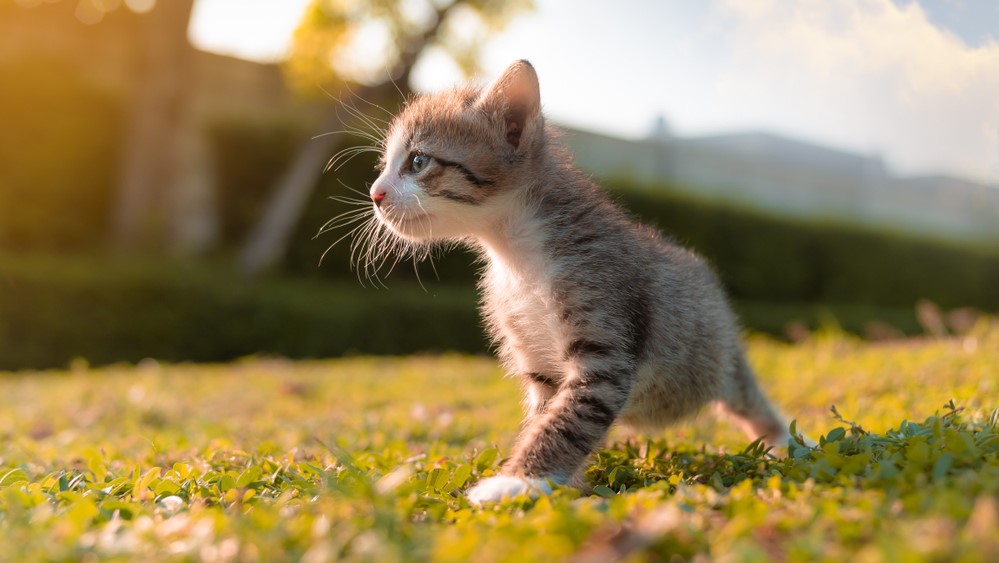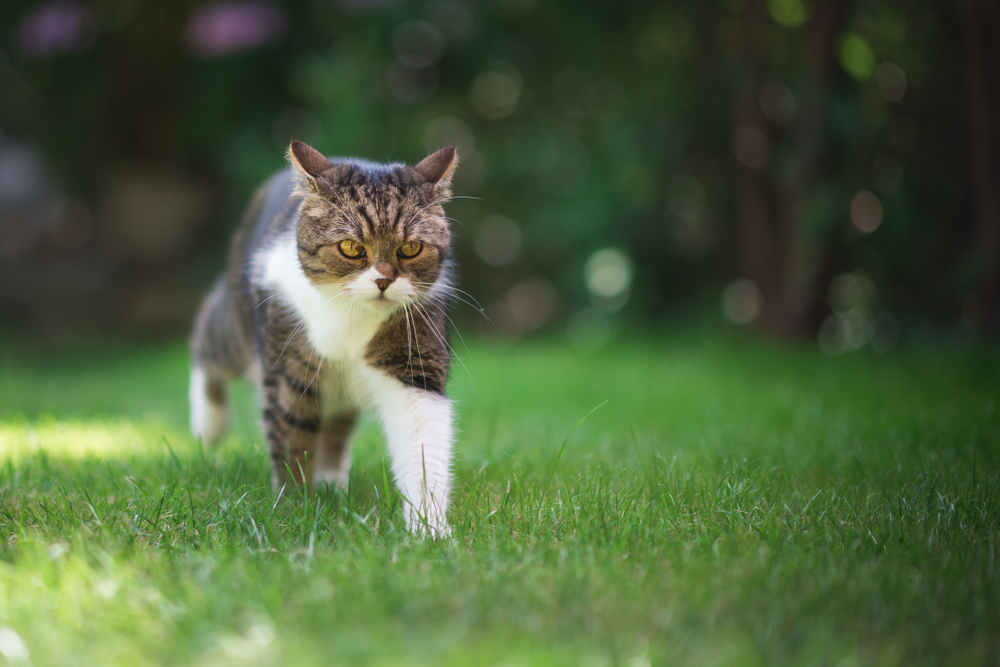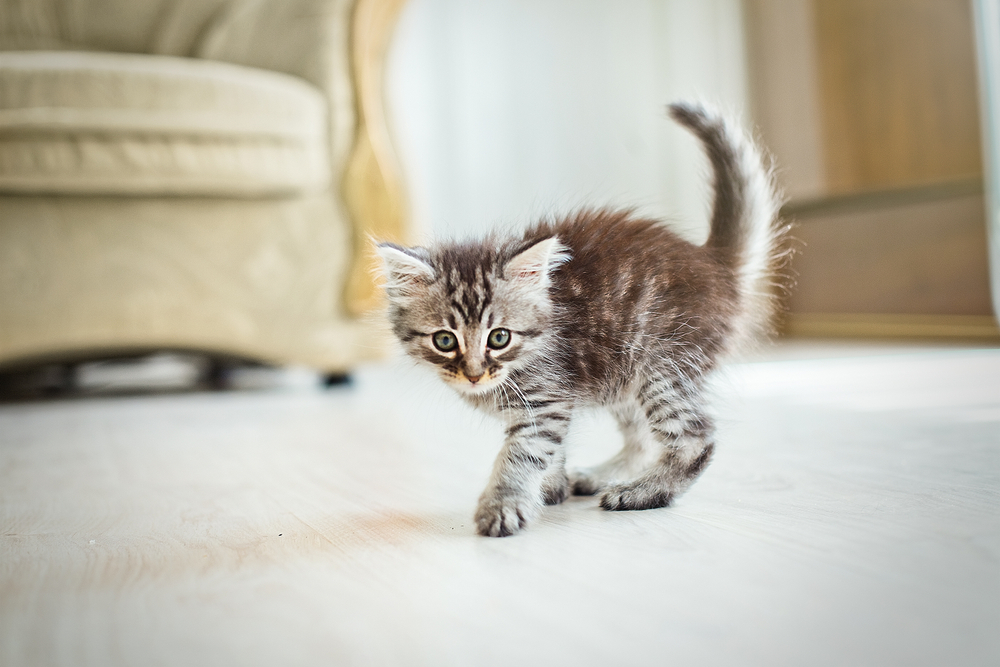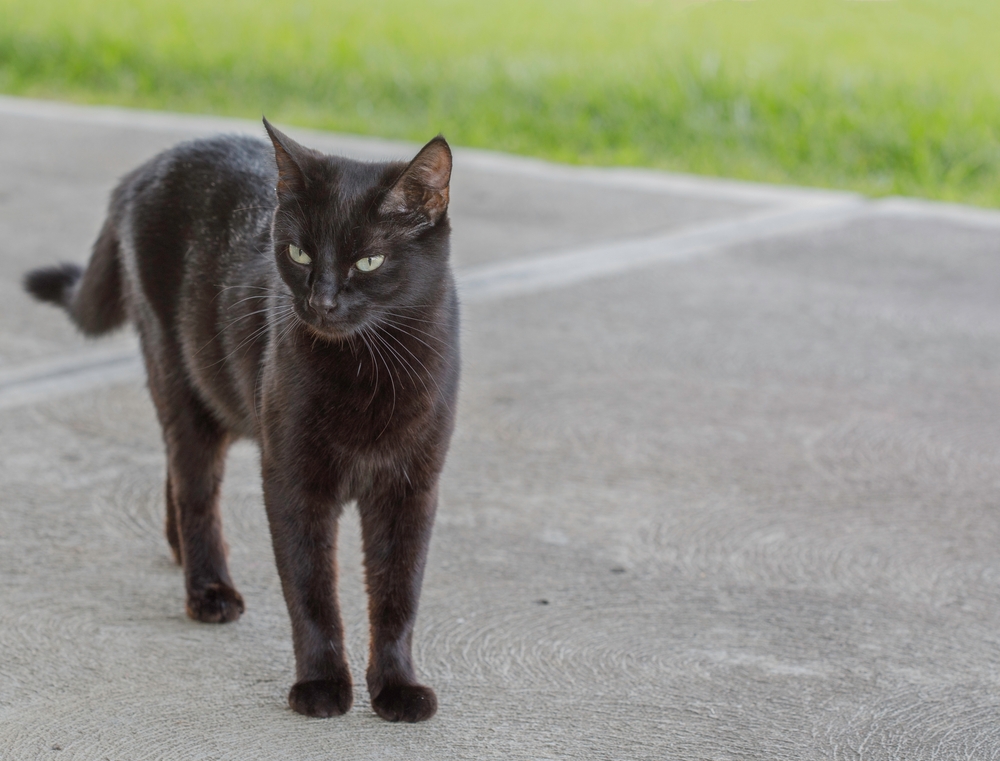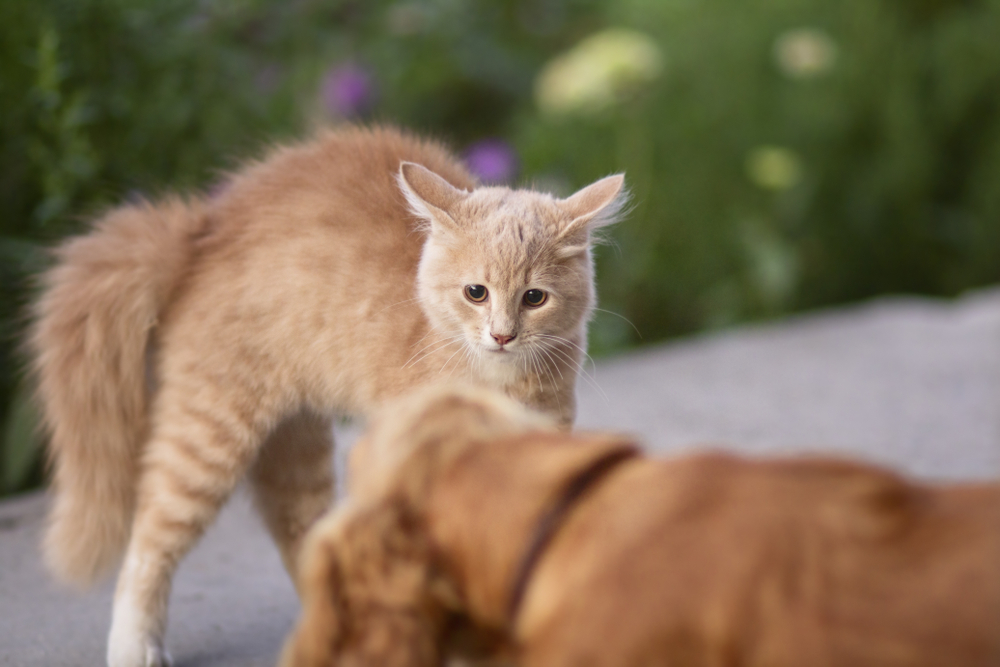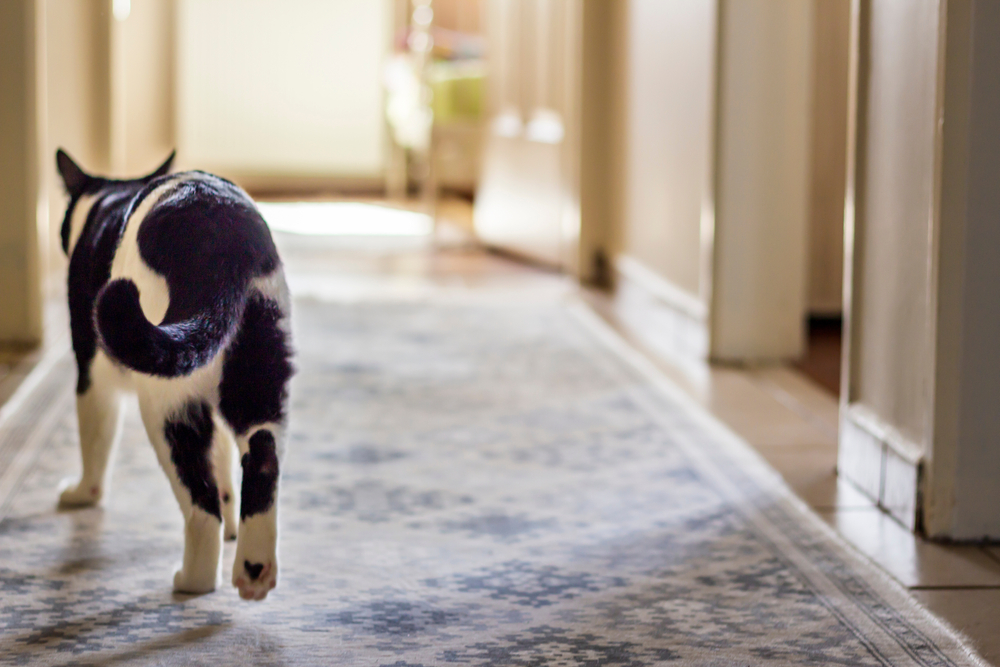📖 Table of Content:
Our furry friends are full of mesmerizing (and often comical) moves, but can cats walk backwards? Did you watch way too many Michael Jackson videos that even your kitty has purrfected that moonwalk you’ve been trying to learn for a month now?
I’m sure it’s a pretty interesting thing to see your feline buddy putting on a show for you. Walking backward with surreal elegance like she’s done it a thousand times before, while you watch her with your jaw on the floor. How does she manage that?!
Well, we’ll unravel this fascinating phenomenon together. Our furry friends possess an amazing sense of balance and flexibility. You see it in the way they always land on their feet or climb your fancy sofa like they’re born to do so. They can twist their bodies like they’re from another world.
But don’t worry, your fluff isn’t an alien in disguise or a new feline Michael Jackson. If you’d like to know why she suddenly decided to do a moonwalk across your living room, let’s answer the question of all curious people that came here today.
Can cats walk backwards?
As you probably already know – yes, cats can walk backwards. However, you shouldn’t ignore this peculiar behavior, as it can be a sign of some serious medical conditions.
Of course, it doesn’t always have to mean your kitty is sick. Sometimes, this change in behavior happens after being spayed, if your kitty is scared, or simply because she’s in a silly mood and wants to have some fun.
To make sure it’s nothing serious, it’s important that you talk to your kitty’s vet about this change. They’ll run all the necessary tests that will determine whether your fluff is dealing with some underlying medical conditions, or you simply have a feline clown on your hands that wants to make you laugh.
Reasons why your fluff may be walking backwards
So, now that we know that cats can walk backwards another question arises – “Why does this happen?” I know that the last thing you want to hear is that your furbaby may be sick, but this is often the sign of an underlying medical condition, which is why it’s crucial that you talk to her vet, first.
Sometimes, however, it’s simply her reaction to being scared by something, or her hunting tactic. Let’s not forget that our cuddle buddies are predators, always looking for something to hunt down (even if it’s your feet when you head to the kitchen).
If you’re worried about your dear furry companion and you can’t wait for the vet’s visit, let’s see what are some of the common reasons why your cat may be walking backwards.
1. She’s scared
When cats feel scared or threatened, their natural instincts throw them into full-on survival mode. When their flight or fight response is activated, they often start walking backwards, and it’s the funniest thing ever. To us, of course. Especially if it happens simply because you put down your TV remote a bit too loud.
But, why would she choose to do a moonwalk out of all things? Well, in nature, walking backwards gives them an advantage because they get to keep their eyes on the threat while putting some distance between them at the same time.
I mean, just imagine yourself walking down a dark alley, and you come face-to-face with a shadow. Would your first instinct be to back away, or run towards it? You’d probably want to get as far as possible from it, and it’s the same with your fluff.
You probably noticed this in many catfights you’ve watched from your window. They’re all about drama and showing how they’re not scared even though their small hearts are shivering in fear. That’s why we love them.
2. Feline Cognitive Dysfunction
As kitties age, just like us, their brain function can experience some changes. They often affect their behavior and motor skills, including the way they walk. Disorientation is a common behavior associated with Feline Cognitive Dysfunction (FCD).
Because of this change in their behavior, kitties find it harder to navigate their surroundings, which leaves them confused and, occasionally, makes them walk in reverse. It’s like your old fluff lost her superpower – her sense of space and balance.
Of course, you shouldn’t jump to conclusions if you see your kitty taking some steps in reverse. It doesn’t mean she has FCD. If that turns out to be the case, you should treat her like you would any elderly person you care about: with extra care and support, by helping her to navigate through her home with ease.
3. Feline Infectious Peritonitis
Our kitties can also suffer from a feline type of coronavirus, and Feline Infectious Peritonitis (FIP) is often caused by it. Most commonly, it affects kittens and young cats, and it can be pretty challenging to diagnose and treat.
Because FIP affects different organs in the body, it can lead to a wide range of symptoms and behavioral changes. It often has an impact on the feline’s neurological system, causing all kinds of coordination and balance issues.
As a result, some kitties exhibit different movements, including walking in reverse. If your beloved fluff wants to take a step forward, but her coordination is not the best, she may stumble, lose her balance, or walk backwards.
Because FIP is a pretty challenging disease, it’s important that your vet makes a diagnosis. If this behavior happens often, it’s crucial that you take your feline to the vet station so they can give her the care and support she needs.
4. Feline Vestibular Disease
The vestibular system is responsible for maintaining balance in both humans and cats. It’s our natural GPS! It helps us and our feline friends navigate the world. When something goes wrong with this system, it can cause your fluff to lose her sense of balance.
Feline Vestibular Disease (FVD) can be caused by a variety of factors, including ear infections, head trauma, injuries, or even some medications. If your feline friend is dealing with FVD, she may be experiencing dizziness, difficulty in maintaining her balance, or a general lack of coordination.
Walking in reverse may help her gain some control over her movements. By taking a step back, she adjusts her body position, creating more stability. The good news is that this condition is usually temporary, and it’s not a cause for concern.
Most kitties recover from it on their own, but it’s important that you provide your furbaby with a safe and comfortable environment during her recovery. Make her food, water, and litter easily accessible so she won’t have to struggle with her basic needs.
5. She ingested something hazardous
I know you don’t want to hear about the possibility of your cat being poisoned, but her change in behavior can be caused by her ingesting something hazardous. Our feline friends are curious creatures, and their nature can get them in all kinds of trouble, including this one.
When cats ingest something harmful, it can affect their nervous system and lead to some unusual behaviors, including walking backwards. The toxins interfere with her coordination and balance, and her brain and muscles fail to work together.
Walking in reverse alone isn’t a clear sign of poisoning. If it’s accompanied by other signs such as vomiting, difficulty breathing, or tremors, it’s crucial to take her to the vet right away.
If you suspect your cat may be poisoned, don’t panic, but act quickly. Contact the vet immediately, and they’ll provide you with guidance on how to handle the situation the best way possible.
6. She may be having a seizure
Seeing your cat having a seizure is both scary and completely heartbreaking. Although they can manifest in many ways, one of them is walking backwards.
During a seizure, your fluff’s brain experiences all kinds of changes and disruptions, which can mess up her coordination. Don’t worry, not all kitties who walk backward have seizures, but it’s a potential symptom you should keep an eye out for.
Because seizures in cats can be caused by various factors, your fluff needs a proper diagnosis and treatment that will enable her to live the long and fulfilling life she deserves. If you suspect she may be dealing with this condition, taking her to the vet and developing an appropriate treatment plan will be of great help.
Walking backwards isn’t always a sign of a disease!
Don’t worry, walking backwards isn’t always a sign of something serious. We all know how silly our dear furbabies can be. Sometimes, they choose to walk in reverse simply because they can!
If she’s been outside, it may be time to check her for fleas. They can make your feline friend very uncomfortable, so she may look for different ways to get them off, including jumping, rolling, walking backward, scratching, and more.
Before using any flea control products, make sure your vet confirms they’re safe for her, first. Make sure they’re made for cats, and not other animals. Yes, even dogs.
